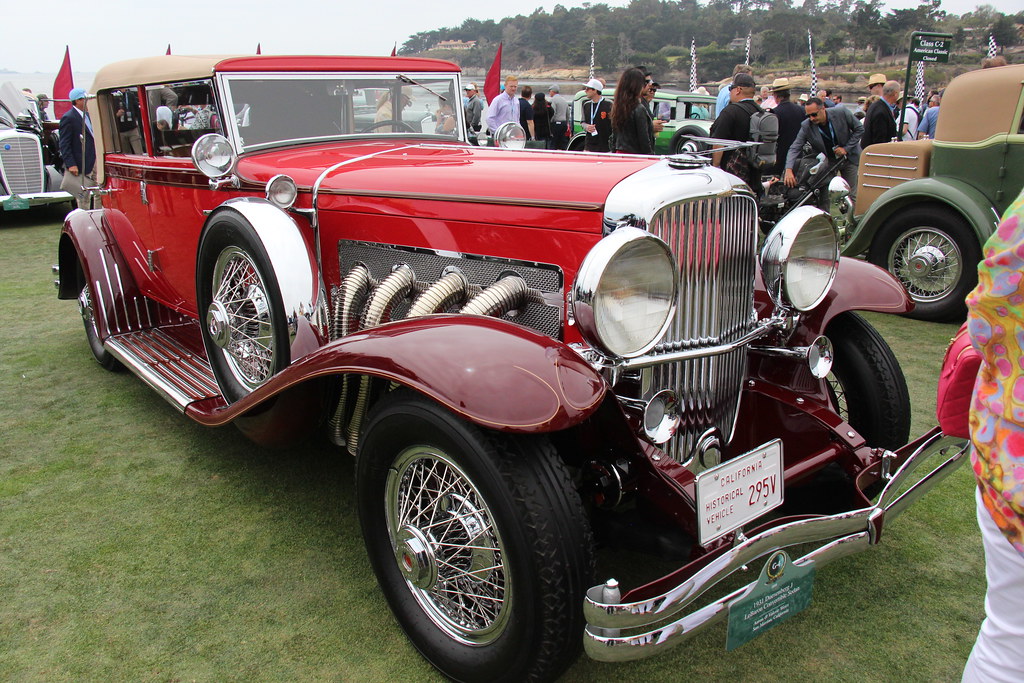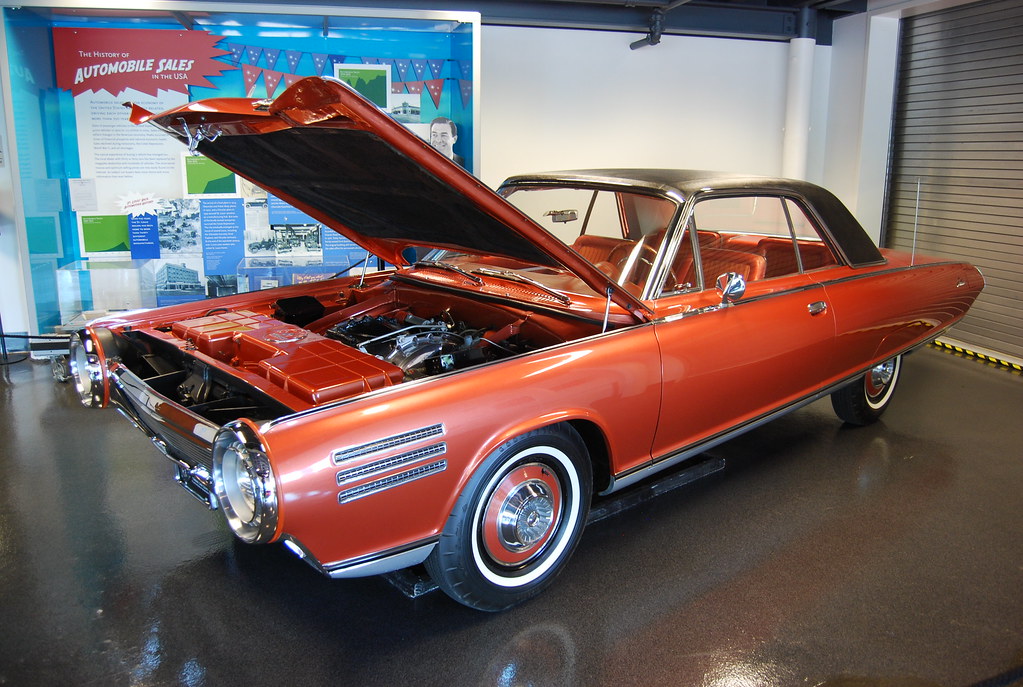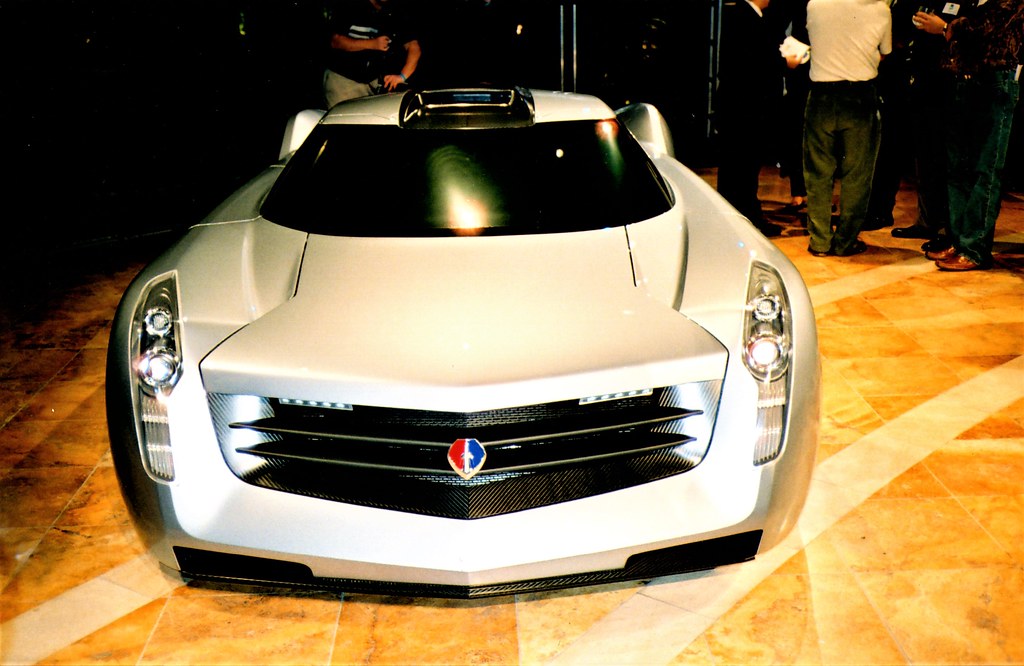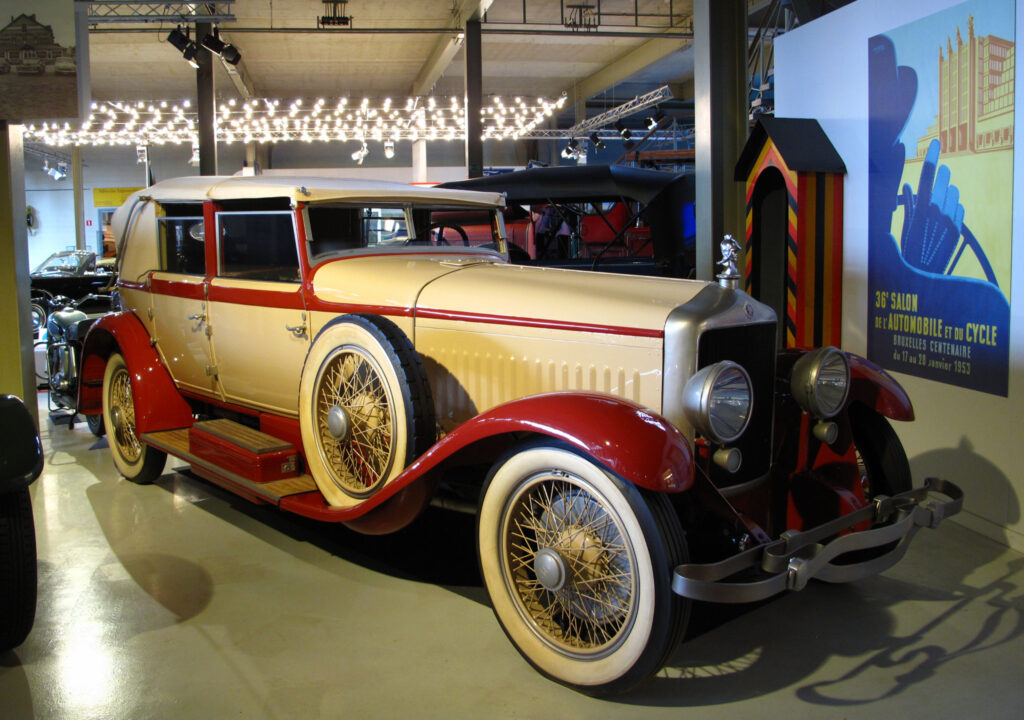
Jay Leno is not just a beloved comedian and television host; he is, fundamentally, an automotive legend. His deep-seated passion for anything with wheels has culminated in a private car collection often celebrated as one of the most impressive globally. Far from a mere hobby, Leno’s “Big Dog Garage” in Burbank, California, spanning a colossal 140,000-square-feet, stands as a veritable shrine to automotive history, innovation, and unwavering passion. It’s a meticulously curated museum, where every vehicle, from steam-powered behemoths to jet-propelled prototypes, tells a unique story, reflecting his encyclopedic knowledge and profound emotional connection to the evolution of the automobile.
This isn’t a collection amassed purely for investment; it’s an empire built out of sheer, unadulterated love for automobiles. Managed by a dedicated full-time team of mechanics and restorers, every single vehicle is maintained in pristine, running condition, a testament to Leno’s commitment to functionality over mere display. The diversity is astonishing, encompassing vintage classics from the early 1900s, formidable race cars, imaginative concept vehicles, custom-built masterpieces, motorcycles spanning various eras, and even groundbreaking electric and steam-powered machines. It’s an automotive symphony that harmonizes the past, present, and even hints at the future of mobility.
While many collections boast impressive vehicles, Leno’s stands apart due to his active engagement and a philosophy prioritizing enthusiasm and access over exclusivity. His well-known aversion to the “VIP hoops” and alleged allocation systems of certain marques, such as Ferrari, underscores his commitment to the pure joy of motoring. As he famously stated regarding McLaren, “I gave McLaren the money, and McLaren gave him the car.” This ethos ensures his garage remains a vibrant, living testament to the engineering marvels and design philosophies that have shaped our automotive world. Join us now as we delve into some of the most iconic cars gracing the hallowed halls of Jay Leno’s incomparable collection.

1. **McLaren F1 (1994)**: The undisputed crown jewel within Jay Leno’s breathtaking assembly is none other than the 1994 McLaren F1, a machine that transcended the very definition of a supercar upon its debut and continues to command awe. This isn’t just a car; it’s a revolutionary statement, a testament to engineering brilliance and uncompromising performance. With only 106 examples ever produced, its scarcity only amplifies its mythical status, placing it in an echelon far beyond most automotive creations. Leno’s F1, reportedly the first McLaren imported to the US and recently fully restored, embodies a piece of motoring history both rare and incredibly significant.
At the heart of this automotive marvel lies a formidable 6.1-liter BMW V12 engine, meticulously crafted and ingeniously housed within an engine bay lined with gold foil – a detail speaking volumes about the no-expense-spared philosophy behind its creation and its exceptional ability to dissipate heat. This powerhouse propels the F1 to an astonishing top speed of 240 mph, a figure profoundly impressive even by today’s hypercar standards. The driving experience is further uniquely defined by its central driving position, flanked by two passenger seats, a layout immediately communicating its focus on the driver and its roots in Formula 1-inspired design.
The value of the McLaren F1 is as staggering as its performance, with Leno’s example valued between $14 to $17 million, and some estimates now place its worth at over $20 million. This immense figure is not merely a reflection of its rarity or its technical prowess, but also its historical significance as a benchmark-setting vehicle. Even at McLaren Headquarters, a strict policy ensures no more than three F1s are housed under the same roof due to insurance considerations, underscoring the extraordinary preciousness of this automobile. Its place in Leno’s collection is not just as a prized possession but as a beacon of automotive innovation that continues to inspire.
Read more about: From Austrian Oak to Global Statesman: An In-Depth Chronicle of Arnold Schwarzenegger’s Enduring Legacy

2. **1955 Mercedes-Benz 300SL Gullwing**: Beyond the modern marvels, Leno’s collection holds timeless icons, none more captivating than the 1955 Mercedes-Benz 300SL Gullwing. This vehicle is immediately recognizable by its eponymous upward-opening doors, a design feature as revolutionary in the mid-1950s as it is enduringly stylish today. It’s a car seamlessly blending race-bred performance with unparalleled elegance, securing its place as one of the most collectible and aesthetically pleasing automobiles ever created. Leno’s particular example is celebrated for its pristine condition, a testament to his dedication to preserving automotive heritage in its most authentic form.
Underneath its sleek, aerodynamic silhouette, the 300SL Gullwing houses a robust 3.0-liter inline-6 engine, which, for its era, delivered remarkable power and reliability. This engineering marvel enabled the car to achieve a top speed of 160 mph, making it one of the fastest production cars of its time. Its advanced direct fuel injection system was another groundbreaking feature, contributing to its superior performance and efficiency. The vehicle’s racing pedigree is undeniable, directly derived from Mercedes-Benz’s successful sports car racing program, a heritage that imbues every curve and line with a sense of purposeful speed.
The allure of the 300SL Gullwing extends far beyond its mechanical specifications; it’s an object of desire, a sculptural masterpiece that transcends fleeting trends. Its estimated value of $1.5 million and above reflects not only its scarcity but also its iconic status in automotive design and engineering. In Leno’s collection, it stands as a shining example of post-war German ingenuity, a car that perfectly marries opulent luxury with groundbreaking performance, offering an experience that is both exhilarating and deeply sophisticated, characteristic of the finest vehicles of any generation.
Car Model Information: 2025 Honda Civic Sport
Name: Mercedes-Benz 300 SL
Caption: 300 SL roadster and gullwinged coupé
Manufacturer: Mercedes-Benz
Production: Mercedes-Benz 300 SLR#Uhlenhaut Coupé
Assembly: Stuttgart
Designer: Friedrich Geiger
Class: Sports car,Grand tourer
BodyStyle: coupé,Roadster (automobile)
Platform: Coupé W198 I, Roadster W198 II
Related: Mercedes-Benz 190 SL
Layout: FR layout
Engine: 2996 cc
Abbr: off
Transmission: Manual transmission
Wheelbase: 2400 mm
Length: 4520 mm
Width: 1790 mm
Height: 1300 mm
Weight: 1500 kg
Predecessor: Mercedes-Benz W194
Successor: Mercedes-Benz W113
Doors: Gull-wing door
Categories: 1960s cars, 24 Hours of Le Mans race cars, All Wikipedia articles needing clarification, All Wikipedia articles written in American English, All articles with vague or ambiguous time
Summary: The Mercedes-Benz 300 SL (chassis code W 198) is a two-seat sports car that was produced by Mercedes-Benz from 1954 to 1957 as a gullwinged coupé and from 1957 to 1963 as a roadster. The 300 SL traces its origins to the company’s 1952 racing car, the W194, and was equipped with a mechanical direct fuel-injection system that increased the power output of its three-liter overhead camshaft straight-six engine.
The 300 SL was capable of reaching 260 km/h (162 mph), earning it a reputation as a sports car racing champion and making it the fastest production car of its time. The car’s iconic gullwing doors and innovative lightweight tubular-frame construction were groundbreaking.
The designation “SL” is an abbreviation of the German term super-leicht, meaning “super-light”, a reference to the car’s racing-bred lightweight construction. The 300 SL was introduced to the American market at the suggestion of Max Hoffman, Mercedes-Benz’s United States importer at the time, who recognized the potential demand for a high-performance sports car among American buyers. The Mercedes-Benz 300 SL remains a highly sought-after classic car and is celebrated for its performance, design, and technological advancements.
Get more information about: Mercedes-Benz 300 SL
Buying a high-performing used car >>>
Brand: Mercedes-Benz Model: 300SL Gullwing
Price: $26,923 Mileage: 1,460 mi.
Read more about: Gearheads, Start Your Engines! These 12 Vintage Icons Still Define Automotive Perfection

3. **Duesenberg Model X (1927)**: Venturing further back into the opulent annals of automotive history, Jay Leno’s collection proudly showcases the exceptionally rare 1927 Duesenberg Model X. This pre-war American luxury car is a truly magnificent specimen, representing an era of unparalleled grandeur and bespoke craftsmanship in the United States. Duesenberg itself was synonymous with ultimate luxury and engineering prowess, creating vehicles the envy of the world’s elite. The Model X holds a particularly special place as one of the scant few survivors from its limited production run, making Leno’s ownership a significant curatorial achievement.
The Model X, powered by a substantial 265 cubic inch straight-8 engine, was a technological marvel for its time, designed to deliver smooth, powerful performance befitting its luxury status. While its reported top speed of 85 mph might seem modest by today’s standards, it was an impressive feat for a vehicle of its size and complexity in the 1920s, offering effortless cruising and a commanding presence on any road. The sheer scale and intricate detailing of the Duesenberg epitomized an age when automobiles were often hand-built works of art, reflecting the discerning tastes and extravagant lifestyles of their owners.
The estimated value of a Duesenberg Model X, exceeding $2 million, underscores its profound historical significance and extreme rarity. These vehicles were not merely modes of transport; they were statements of wealth, power, and sophisticated taste. Leno’s meticulous preservation of this Model X allows enthusiasts to glimpse into a bygone era of American automotive manufacturing, where elegance, engineering, and sheer audacity converged to create some of the most desirable machines the world has ever seen. It’s a rolling sculpture that embodies the zenith of pre-Depression era American luxury.
Car Model Information: 2025 Honda Civic Sport
Name: Duesenberg Straight 8
Caption: touring car
Manufacturer: Duesenberg
Aka: Duesenberg Straight Eight
Production: 1921–1926
Assembly: Indianapolis,Indiana,United States
Designer: Fred Duesenberg
Class: Luxury car
BodyStyle: by arrangement with coachbuilder
Layout: Front-engine, rear-wheel-drive layout
Related: Duesenberg Model X
Engine: 260 cuin
Abbr: on at 1500 rpm
Disp: flip
Transmission: 3 speed manual
Wheelbase: 134 in
Successor: Duesenberg Model X
Sp: us
Configuration: straight-eight engine
Displacement: 260 cuin
Bore: 2.875 in
Stroke: 5.0 in
Block: cast iron, 3 bearings
Head: cast iron, detachable
Valvetrain: Overhead camshaft
Compression: 5:1
Fuelsystem: [object Object]
Management: Delco coil and points, distributor mounted at end of starter/generator unit
Fueltype: Gasoline
Oilsystem: Wet sump, full pressure lubrication
Coolingsystem: water cooled
Power: 88 bhp
Torque: 170 lbft
Categories: All articles with dead external links, Articles with dead external links from February 2024, Articles with permanently dead external links, Articles with short description, Cars discontinued in 1926
Summary: The Duesenberg Model A was the first automobile in series production to have hydraulic brakes and the first automobile in series production in the United States with a straight-eight engine. Officially known as the Duesenberg Straight Eight, the Model A was first shown in late 1920 in New York City. Production was delayed by substantial changes to the design of the car, including a change in the engine valvetrain from horizontal overhead valves to an overhead camshaft; also during this time, the company had moved its headquarters and factory from New Jersey to Indiana. The Model A was manufactured in Indianapolis, Indiana, from 1921 to 1925 by the Duesenberg Automobiles and Motors Company and from 1925 to 1926 at the same factory by the restructured Duesenberg Motor Company. The successors to the company began referring to the car as the Model A when the Model J was introduced.
Get more information about: Duesenberg Model A
Buying a high-performing used car >>>
Brand: Duesenberg Model: Model X
Price: $26,923 Mileage: 1,460 mi.

4. **Bugatti Type 57 Atlantic SC (Replica)**: While Jay Leno’s collection is replete with originals, his appreciation for automotive art extends to meticulously crafted tributes, exemplified by his Bugatti Type 57 Atlantic SC replica. The original Type 57 Atlantic is considered by many the most beautiful and valuable car in the world, a truly priceless masterpiece. Recognizing the impossibility and immense risk of regularly enjoying an authentic example, Leno commissioned a painstakingly detailed replica, allowing him to revel in the iconic design and engineering spirit without imperiling an irreplaceable piece of history. This decision highlights his genuine love for the car’s aesthetics and heritage.
The replica faithfully captures the essence of the original Type 57 Atlantic SC, known for its distinctive riveted dorsal seam, aerodynamic bodywork, and avant-garde styling decades ahead of its time. Powered by a 3.3-liter supercharged straight-8 engine, the replica aims to emulate the performance characteristics that made the original so revered, offering a reported top speed of 120 mph. This car is a testament to the fact that passion often outweighs pure provenance in the world of collecting, particularly when the original is so exceedingly rare that only a handful were ever made and only a few survive.
Valued at over $1 million, even as a replica, this Bugatti Type 57 Atlantic SC underscores the extraordinary lengths to which dedicated collectors will go to experience automotive legends. It’s a prime example of how craftsmanship and attention to detail can recreate the magic of an original, offering a driving experience that is both thrilling and deeply respectful of its heritage. For Leno, this car is not just a stand-in; it’s a celebration of Bugatti’s unparalleled artistry and visionary design, allowing a wider appreciation for a design that would otherwise remain confined to the most exclusive museums and private vaults.
Car Model Information: 2025 Honda Civic Sport
Name: Bugatti Type 57
Caption: 1936 Bugatti Type 57 Atalante
Manufacturer: Bugatti
Assembly: Molsheim
Production: 1934–1940,710 produced
Designer: Jean Bugatti
Class: Grand tourer
Engine: DOHC,Straight-8
Predecessor: Bugatti Type 49
Successor: Bugatti Type 101
Categories: 24 Hours of Le Mans race cars, Articles with short description, Bugatti automobiles, CS1 Romanian-language sources (ro), Cars introduced in 1934
Summary: The Bugatti Type 57 and later variants (including the famous Atlantic and Atalante) was a grand tourer built from 1934 through 1940. It was an entirely new design created by Jean Bugatti, son of founder Ettore. A total of 710 Type 57s were produced.
Type 57s used a straight-8 twin-cam engine of 3.3 L (3257 cc/198 in³) displacement. Bore and stroke were 72 mm by 100 mm based on that of the Type 49 but heavily modified by Jean Bugatti, unlike the single cam engines of the Type 49 and earlier models. The engines of the Type 50, 51 used bevel gears at the front of the engine to transmit power from the crankshaft, whereas the Type 57 used a train of spur gears at the rear of the engine, with fiber gear wheels on the camshafts to achieve more silence in operation.
There were two basic variants of the Type 57 car:
The original Type 57
The lowered Type 57S/SC
The Type 57 chassis and engine was revived in 1951 as the Bugatti Type 101. A rediscovered Type 57 was sold for 3.4 million euros at auction on 7 February 2009 at a motor show in Paris.
Get more information about: Bugatti Type 57
Buying a high-performing used car >>>
Brand: Bugatti Model: Type 57 Atlantic SC
Price: $26,923 Mileage: 1,460 mi.

5. **Lamborghini Miura S (1969)**: No comprehensive exploration of a world-class car collection would be complete without acknowledging the vehicle widely credited with kickstarting the supercar era: the Lamborghini Miura. Jay Leno’s 1969 Miura S, resplendent in a dazzling orange hue, is a stunning embodiment of this pivotal machine and undoubtedly one of the most visually arresting vehicles within his entire garage. The Miura, with its groundbreaking mid-engine layout and breathtaking Bertone styling, redefined what a high-performance sports car could be, blending exotic looks with a thrilling driving dynamic that captivated the automotive world.
Beneath its sensuous, low-slung bodywork lies a transversely mounted 3.9-liter V12 engine, a masterpiece of Italian engineering that produces an intoxicating symphony of power. This engine configuration was revolutionary, allowing for a more balanced weight distribution and contributing to the Miura’s exceptional handling characteristics. It propelled the car to a top speed of 171 mph, a blistering pace for its time, firmly establishing its credentials as a true performance icon. The Miura S variant further refined the original design, offering enhancements in both power and luxury, making it even more desirable.
With an estimated value exceeding $2 million, Leno’s Miura S is more than just a car; it is a profound piece of cultural and automotive history. It represents the audacious vision of Ferruccio Lamborghini and the creative genius of Marcello Gandini, whose design forever cemented the Miura’s place in the pantheon of automotive legends. Its presence in Leno’s collection speaks to his appreciation for cars that not only push the boundaries of performance but also possess an undeniable artistic flair, embodying the spirit of passion and innovation that defines the very best of the automotive world.
Car Model Information: 2025 Honda Civic Sport
Name: Lamborghini Miura
Caption: 1971 Lamborghini Miura P400 SV
Manufacturer: Lamborghini
Production: 1966–1973
Assembly: Sant’Agata Bolognese
Successor: Lamborghini Countach
Class: Sports car
BodyStyle: coupé
Layout: Transverse engine,rear mid-engine, rear-wheel-drive layout
Engine: cvt,Lamborghini V12,V12 engine
Transmission: Manual transmission
Wheelbase: 2500 mm
Abbr: on
Length: 4360 mm
Width: 1760 mm
Height: 1055 mm
Weight: 1292 kg
Designer: Marcello Gandini
Sp: us
Categories: 1970s cars, All Wikipedia articles written in British English, All articles needing additional references, All articles with unsourced statements, Articles needing additional references from February 2024
Summary: The Lamborghini Miura is a sports car produced by Italian automaker Lamborghini between 1966 and 1973. The car was the first high-performance production road car with a rear mid-engine, rear-wheel-drive layout, which has since become the standard for performance-oriented sports cars. When released, it was the fastest production car in the world.
The Miura was originally conceived by Lamborghini’s engineering team, which designed the car in its spare time against the wishes of company founder Ferruccio Lamborghini, who preferred powerful yet sedate grand touring cars over the race car-derived machines produced by local rival Ferrari. However, when the development mule was revealed to Ferruccio, he gave approval for its development to continue.
The Miura’s rolling chassis was presented at the 1965 Turin Auto Show, and the prototype P400 debuted at the 1966 Geneva Motor Show. It received stellar receptions from showgoers and the motoring press alike, each impressed by Marcello Gandini’s sleek styling and the car’s revolutionary mid-engine design.
Lamborghini’s flagship, the Miura received periodic updates and remained in production until 1973. A year later the Countach entered the company’s lineup, amid tumultuous financial times for the company.
Get more information about: Lamborghini Miura
Buying a high-performing used car >>>
Brand: Lamborghini Model: Miura S
Price: $26,923 Mileage: 1,460 mi.
Read more about: 19 Classic Italian Sports Cars That Still Ignite Our Passion

6. **1963 Chrysler Turbine Car**:As we delve deeper into Jay Leno’s unparalleled collection, we encounter vehicles that challenge conventional notions of automotive engineering. The 1963 Chrysler Turbine Car stands as a monumental testament to bold experimentation and a daring vision that once captivated the American automotive landscape. One of only nine survivors from a groundbreaking, experimental fleet, this vehicle represents Chrysler’s audacious foray into an entirely different propulsion system during the vibrant, innovative era of the 1960s.
As we delve deeper into Jay Leno’s unparalleled collection, we encounter vehicles that challenge conventional notions of automotive engineering. The 1963 Chrysler Turbine Car stands as a monumental testament to bold experimentation and a daring vision that once captivated the American automotive landscape. One of only nine survivors from a groundbreaking, experimental fleet, this vehicle represents Chrysler’s audacious foray into an entirely different propulsion system during the vibrant, innovative era of the 1960s.
What truly sets this machine apart is its revolutionary jet turbine engine, a powerplant unlike anything mass-produced before or since for civilian use. This remarkable engine could run on virtually any combustible liquid, from peanut oil to tequila, showcasing a versatility and futuristic outlook that was profoundly ahead of its time. The smooth, almost silent operation of the turbine engine offered a glimpse into a potential future where the rumble of pistons was replaced by a continuous, effortless hum.
The performance figures for the 1963 Chrysler Turbine Car, while perhaps not reaching hypercar speeds, were nonetheless impressive for its era and unique engineering. With a reported top speed of 120 mph, it offered exhilarating performance alongside its novel mechanics. Its estimated value exceeding $500,000 reflects not just its rarity, but its profound historical significance as a functioning piece of radical automotive technology that challenged the very definition of a car.
Leno’s deep appreciation for automotive history, particularly for vehicles that pushed technological boundaries, makes the Chrysler Turbine Car a natural fit within his garage. It embodies his passion for understanding the evolution of the automobile, showcasing how manufacturers bravely explored new frontiers in pursuit of what was then considered the ultimate driving experience. It remains a fascinating engineering curiosity and a priceless artifact of America’s ambitious mid-century industrial spirit.
Car Model Information: 2023 Subaru Forester Limited
Name: Chrysler Turbine Car
Assembly: Detroit,United States
Caption: Walter P. Chrysler Museum
Manufacturer: Chrysler Corporation
Production: 1963–1964,55 produced
Class: Concept car
BodyStyle: coupé
Layout: Front-engine, rear-wheel-drive layout
Engine: Chrysler turbine engines
Width: 72.9 in
Abbr: on
Height: 53.5 in
Wheelbase: 110 in
Length: 201.6 in
Weight: convert
Designer: Elwood Engel
Transmission: TorqueFlite
Categories: Articles with Internet Archive links, Articles with short description, Cars powered by gas turbines, Chrysler concept vehicles, Chrysler vehicles
Summary: The Chrysler Turbine Car is an experimental two-door hardtop coupe powered by a turbine engine and was manufactured by Chrysler from 1963 to 1964. Italian design studio Carrozzeria Ghia constructed the bodywork, and Chrysler completed the final assembly in Detroit. A total of 55 cars were manufactured: five prototypes and a limited run of fifty cars for a public user program. All have a signature metallic paint named “turbine bronze”, roughly the color of root beer. The car was styled by Elwood Engel and Chrysler studios. They featured power brakes, power steering, and a TorqueFlite transmission.
The Chrysler turbine engine program that produced the Turbine Car began during the late 1930s and created prototypes that completed long-distance trips in the 1950s and early 1960s. The A-831 engines that powered the Ghia-designed Turbine Car could operate on many fuels, required less maintenance, and lasted longer than conventional piston engines. However, they were much more expensive to produce.
After testing, Chrysler conducted a user program from October 1963 to January 1966 that involved 203 drivers in 133 cities in the United States cumulatively driving more than one million miles (1.6 million km). The program helped the company determine problems with the cars, notably with their complicated starting procedure, relatively unimpressive acceleration, and sub-par fuel economy and noise. The experience also revealed the advantages of the turbine engines, including their remarkable durability, smooth operation, and relatively modest maintenance requirements.
After the user program ended in 1966, Chrysler reclaimed the cars and destroyed all but nine; Chrysler kept two cars, six are displayed at museums in the United States, and one is in comedian Jay Leno’s private collection. Chrysler’s turbine engine program ended in 1979, mainly due to the failure of the engines to meet government emissions regulations, relatively poor fuel economy, and as a condition of receiving a government loan in 1979.
Get more information about: Chrysler Turbine Car
Buying a high-performing used car >>>
Brand: Chrysler Model: Turbine Car
Price: $32,025 Mileage: 17,380 mi.
Read more about: Informed Decisions: The Car Brands With the Poorest Resale Value After Just Three Years

7. **EcoJet Concept Car**:Stepping from historical experimentation into visionary concepts, Jay Leno’s EcoJet Concept Car is a singular creation that marries cutting-edge design with a profound commitment to sustainable power. This custom-built marvel is not merely a car but a statement, co-designed by Leno himself in collaboration with the engineering giants at General Motors. It represents a bold reimagining of performance, blending high-octane excitement with an environmentally conscious ethos.
Stepping from historical experimentation into visionary concepts, Jay Leno’s EcoJet Concept Car is a singular creation that marries cutting-edge design with a profound commitment to sustainable power. This custom-built marvel is not merely a car but a statement, co-designed by Leno himself in collaboration with the engineering giants at General Motors. It represents a bold reimagining of performance, blending high-octane excitement with an environmentally conscious ethos.
At its core, the EcoJet is powered by a Honeywell turbine engine, demonstrating a continuity with the experimental spirit seen in vehicles like the Chrysler Turbine Car, yet brought firmly into the 21st century. What makes this particular turbine engine truly innovative is its ability to run on biodiesel, making it a pioneer in the realm of high-performance green technology. It achieves an estimated top speed of 160 mph, proving that exhilarating performance need not come at the expense of environmental responsibility.
As a truly one-off creation, the EcoJet Concept Car holds a ‘priceless’ valuation, emphasizing its unique status and the profound vision it embodies. It transcends the traditional metrics of automotive worth, standing as a physical manifestation of a dream. Its existence in Leno’s collection speaks volumes about his desire to explore not just the past, but also the potential future of mobility, advocating for innovation that is both powerful and responsible.
The sleek, aerodynamic lines of the EcoJet are a testament to the seamless integration of form and function, delivering a design that is both futuristic and deeply functional. It’s a compelling example of how a passionate enthusiast can collaborate with industry leaders to bring a groundbreaking concept to life, showcasing a vehicle that is as visually striking as it is technologically advanced. It is a beacon of what is possible when ingenuity and environmental awareness converge.
Car Model Information: 2025 Honda Civic Sport
Categories: Concept cars, Mid-engined vehicles, Sports cars
Summary: The EcoJet is a concept car designed to run on biodiesel fuel, using a Honeywell LTS101 based gas turbine instead of a reciprocating engine. The engine is normally used in helicopters and provides 650 horsepower and 583 ft-lb of torque. Drive is to the rear wheels through a four-speed automatic transaxle adapted from a C5 Corvette. An automatic transmission had to be used, because the turbine requires a constant load and operating a clutch with a manual gearbox would cause the turbine to overspeed.
This concept car was the result of a collaboration between Jay Leno and General Motors, Honeywell, Alcoa and BASF. Unlike other concept cars, it was meant to be driven on the road in a regular fashion, as well as for show purposes.
It is a two-seater car of a coupé design with a hydroformed aluminum chassis and carbon-fiber-reinforced polymer bodywork. The car contains two separate fuel tanks; one contains the main biodiesel fuel, soybean oil, and the other contains a conventional clean-burning jet engine fuel, Jet A (kerosene). The kerosene is used to start the turbine easily at the beginning of a trip and also to run the engine at the end of a trip to clean it, since biodiesel fuel tends to gum up the fuel system if not cleared. The exhaust gas temperature is 1000 degrees Fahrenheit in normal operation and 1800 Fahrenheit at full power. Exhaust is directed upward from two ports on the rear deck. In essence, the car runs on refined cooking oil, thus producing the same kind of smell created by cooking French fries.
The car has an Azentek in-dash car computer running Microsoft Windows Vista, with two LCD screens on the dashboard — one for the aircraft-style digital gauges and another for the multimedia and navigation controls — as well as the standard PC functions, such as word processing and Web access through a WiMAX system. Two other smaller LCD screens are placed on the dashboard to provide rear views, as the car has no rear-view mirrors and uses cameras instead. The functions are controlled by Touchscreen or by Speech recognition software, using an array of microphones. The car was assembled by the Big Dog crew, mechanics employed by Jay Leno to help him maintain his large collection of cars.
Get more information about: EcoJet concept car
Buying a high-performing used car >>>
Brand: General Motors Model: EcoJet Concept Car
Price: $26,923 Mileage: 1,460 mi.
Read more about: From Chrome Karts to Custom Monsters: 14 Wild Rides of the Rich and Famous That’ll Make You Say ‘Wait, What?!’

8. **Jaguar XKSS (Replica of Steve McQueen’s)**:In a collection celebrated for its authenticity, Jay Leno also acknowledges the power of a meticulously crafted tribute, especially when the original is an irreplaceable icon. His Jaguar XKSS replica stands as a magnificent homage to one of motoring’s most legendary machines and one of its most iconic owners, Steve McQueen. The original XKSS was a street-legal variant of Jaguar’s victorious D-Type racer, a rare beast born from competition and imbued with an unparalleled charisma.
In a collection celebrated for its authenticity, Jay Leno also acknowledges the power of a meticulously crafted tribute, especially when the original is an irreplaceable icon. His Jaguar XKSS replica stands as a magnificent homage to one of motoring’s most legendary machines and one of its most iconic owners, Steve McQueen. The original XKSS was a street-legal variant of Jaguar’s victorious D-Type racer, a rare beast born from competition and imbued with an unparalleled charisma.
The allure of the XKSS is deeply intertwined with its racing heritage and its glamorous association with the ‘King of Cool.’ Only 16 examples of the original were ever built before a factory fire tragically halted production, making the surviving cars extraordinarily precious. Leno’s decision to commission a faithful replica speaks to his immense respect for the vehicle’s design and legacy, allowing him to experience its magic without imperiling a multi-million-dollar original.
Underneath its curvaceous, race-bred bodywork, the replica houses a potent 3.4-liter inline-6 engine, designed to emulate the thrilling performance characteristics that made the original so revered. With a top speed of 150 mph, it delivers a driving experience that is visceral and engaging, capturing the essence of a bygone era of sports car purity. This isn’t merely a copy; it’s a meticulously engineered resurrection that honors its muse in every detail.
Valued at over $1.2 million, even as a replica, this Jaguar XKSS underscores the profound lengths to which dedicated collectors will go to safeguard and celebrate automotive legends. It represents a living, breathing connection to a golden age of racing and cinematic cool, a testament to the timeless appeal of automotive artistry and the profound impact of figures like Steve McQueen on car culture.
9. **Ford GT (2005)**:Shifting focus to a powerful symbol of modern American engineering, Jay Leno’s 2005 Ford GT stands proudly as both a performance beast and a revered piece of contemporary American automotive heritage. This car is a direct descendant and a spiritual successor to the legendary Ford GT40s that famously dominated at Le Mans in the 1960s, a legacy that imbues every curve and line with purpose and power.
Shifting focus to a powerful symbol of modern American engineering, Jay Leno’s 2005 Ford GT stands proudly as both a performance beast and a revered piece of contemporary American automotive heritage. This car is a direct descendant and a spiritual successor to the legendary Ford GT40s that famously dominated at Le Mans in the 1960s, a legacy that imbues every curve and line with purpose and power.
At the heart of this formidable machine is a supercharged 5.4-liter V8 engine, a powerhouse of American ingenuity designed to deliver breathtaking acceleration and a thrilling exhaust note. This robust engine propels the Ford GT to an astonishing top speed of 205 mph, placing it firmly in the upper echelons of modern supercars. It’s a testament to Ford’s capability to produce world-class performance vehicles that rival the best from Europe.
The design of the 2005 Ford GT is a masterful blend of retro inspiration and contemporary execution, faithfully echoing the iconic lines of its ancestor while incorporating modern aerodynamic and technological advancements. Its purposeful stance and unmistakable profile ensure it commands attention on any road or track, a true embodiment of raw American power and sophisticated design.
Valued at over $400,000, Leno’s Ford GT exemplifies his appreciation for vehicles that not only deliver exceptional performance but also carry significant cultural and historical weight. It stands as a shining example of American engineering prowess, a car that celebrates a rich racing past while firmly asserting its place as a modern classic in its own right, offering an exhilarating and deeply resonant driving experience.
Car Model Information: 2023 Ford Mustang Mach-E GT
Caption: Ford GT40
Name: Ford GT
Manufacturer: Ford Motor Company
Class: Sports car
Production: 2004–2006,2016–2022
BodyStyle: coupé
Layout: Rear mid-engine, rear-wheel-drive layout
Predecessor: Ford GT40
ModelYears: 2005–2006,2017–2022
Categories: 2010s cars, 2020s cars, All articles with dead external links, All articles with unsourced statements, Articles with dead external links from September 2017
Summary: The Ford GT is a mid-engine two-seater sports car manufactured and marketed by American automobile manufacturer Ford for the 2005 model year in conjunction with the company’s 2003 centenary. The second generation Ford GT became available for the 2017 model year.
The GT recalls Ford’s historically significant GT40, a consecutive four-time winner of the 24 Hours of Le Mans (1966–1969), including a 1-2-3 finish in 1966.
Get more information about: Ford GT
Buying a high-performing used car >>>
Brand: Ford Model: GT
Price: $33,399 Mileage: 23,579 mi.
Read more about: Buyer Beware: 15 Sedans That Won’t Make it to 80,000 Miles Without Costly Repairs

10. **1925 Doble E-20 Steam Car**:Concluding our exploration of Jay Leno’s top automotive treasures, we encounter a vehicle that is a true outlier, yet profoundly significant: the 1925 Doble E-20 Steam Car. This fascinating machine plunges us deep into an almost forgotten, yet incredibly innovative, chapter of automotive history. It showcases a period when steam power was not just viable, but for some, represented the pinnacle of luxury and engineering sophistication.
Concluding our exploration of Jay Leno’s top automotive treasures, we encounter a vehicle that is a true outlier, yet profoundly significant: the 1925 Doble E-20 Steam Car. This fascinating machine plunges us deep into an almost forgotten, yet incredibly innovative, chapter of automotive history. It showcases a period when steam power was not just viable, but for some, represented the pinnacle of luxury and engineering sophistication.
The Doble E-20 was a marvel of its time, far exceeding the performance and refinement of many internal combustion engine vehicles of the era. Its rapid start-up times, silent operation, and impressive power output distinguished it from its noisy, temperamental gasoline-powered counterparts. It embodied a vision of motoring that prioritized smooth, effortless acceleration and an almost ethereal driving experience, making it “way ahead of its time.”
Jay Leno is a fervent advocate for steam cars, dedicating considerable effort to maintaining and celebrating several examples within his collection. The 1925 Doble E-20, with its estimated top speed of 75 mph, demonstrates that steam could deliver robust performance, even if its ultimate place in automotive history was eventually superseded by gasoline. Leno’s commitment highlights his broad, inclusive perspective on automotive evolution.
With an estimated value exceeding $200,000, this Doble E-20 is more than just a rare car; it is a meticulously preserved piece of industrial art and a working testament to alternative propulsion technologies. Its presence in Leno’s garage underscores the incredible diversity and historical depth of his collection, reflecting his profound appreciation for every facet of automotive ingenuity, from the earliest experimental marvels to the most cutting-edge hypercars.
**Final Thoughts: An Enduring Legacy of Steel and Spirit**
Jay Leno’s collection is far more than a mere assembly of expensive machinery; it is a meticulously curated museum of automotive evolution, a vibrant testament to passion, history, and technological daring. Each vehicle, from the experimental allure of the Chrysler Turbine to the silent majesty of the Doble Steam Car, and the modern muscle of the Ford GT, narrates a unique chapter in the grand saga of transportation. It reflects not just the mechanical marvels but the dreams, challenges, and triumphs of engineers and designers across generations.
Leno’s unwavering dedication to restoration and preservation, coupled with his encyclopedic technical knowledge, imbues his collection with an almost living quality. Every car is not only maintained in pristine, drivable condition but also cherished for the story it tells and the innovation it represents. This dynamic approach ensures that his ‘Big Dog Garage’ remains a living, breathing chronicle, celebrating the past, present, and even hinting at the future of the automobile industry.
Read more about: Rev Up Your Engines! These 14 Stars Boast Jaw-Dropping, Priceless Classic Car Collections
For automotive enthusiasts and curious minds alike, Jay Leno’s garage stands as the ultimate dream. It is a place where engineering brilliance, artistic design, and sheer human ingenuity converge, offering an unparalleled glimpse into the very soul of motoring. His generosity in sharing this extraordinary world, whether through his show or public engagements, ensures that this profound love affair with cars is a dream we can all enjoy, inspiring a new generation to appreciate the intricate beauty and enduring spirit of the automobile. He truly is a guardian of automotive heritage, ensuring these mechanical masterpieces continue to ignite wonder for years to come.



